Your cart is currently empty!
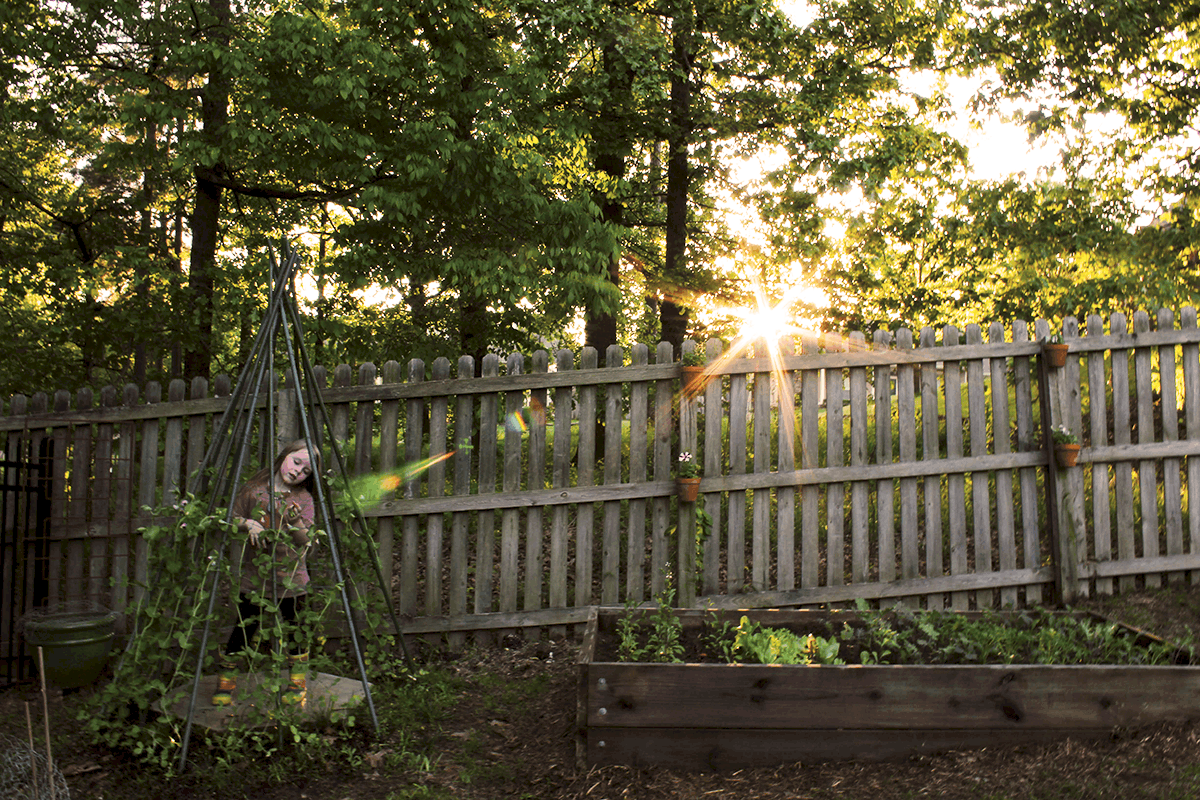
Winter Garden Planning with Kids
A great garden starts in the winter! Now is the time to get out those seed catalogs and figure out what you’re going to plant this year and where. Planning out your garden is such a fun activity to do in the winter. It reminds us that warmth and sunshine will be returning soon. Garden planning can also be a great activity for the kids that will teach them valuable skills while they’re having fun. Today, Creative Team member and Arkansas mom of two, Nichole Holze shares how she and her kids plan their garden every year and plot it out. She’s also got great tips for anyone looking to plant a garden this year and lots of ways to get the kids involved.
This post contains affiliate links.
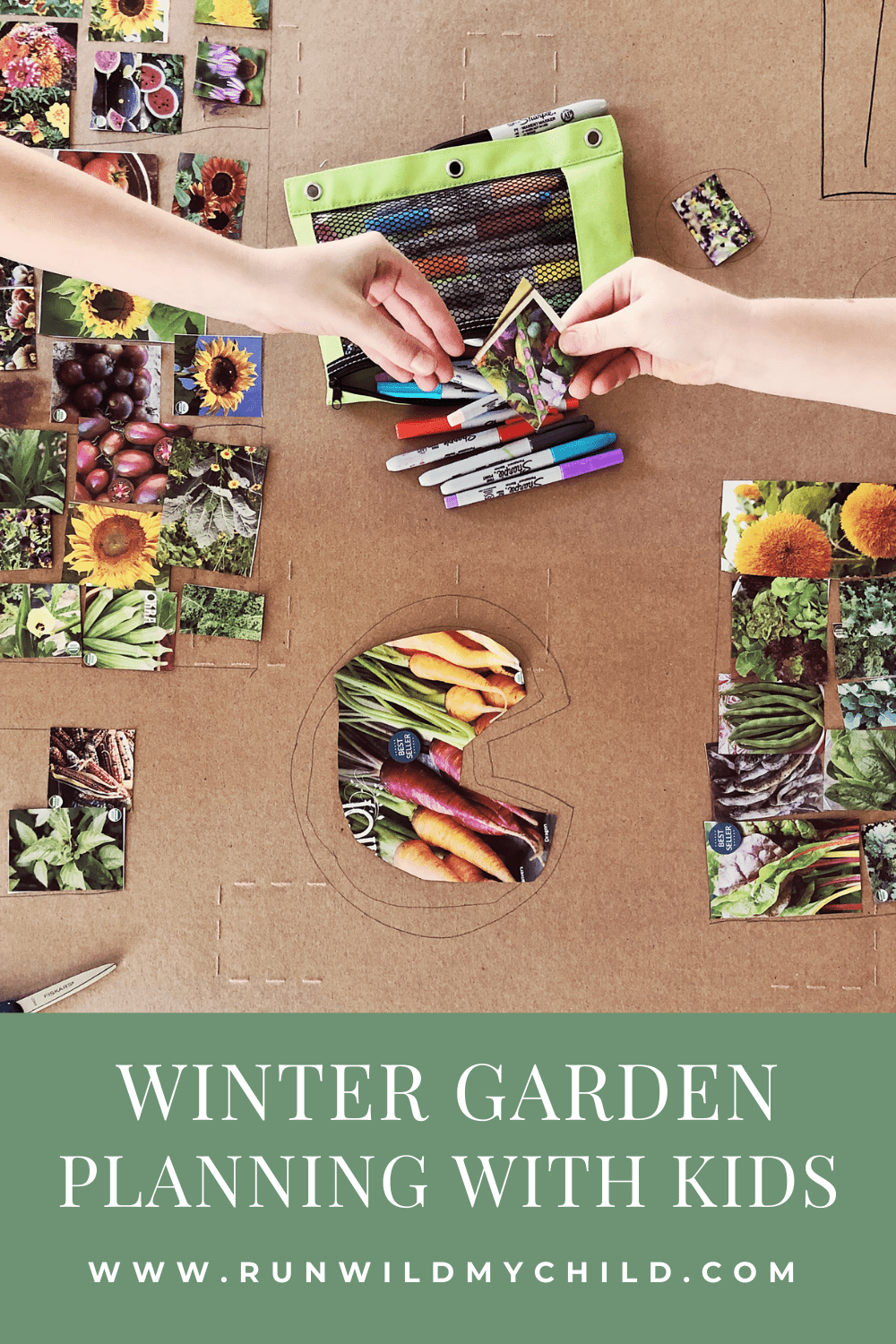
Gardening as a family
Gardening is one of our family’s favorite outdoor hobbies. I didn’t grow up gardening, though. In fact, I had to learn how to garden (TWICE) as an adult. Once in zone 5 and again when we moved to zone 8. Gardening is a hobby that continually teaches us to pay attention to the small things, but also brings us such joy throughout the year. While most of the actual gardening happens in spring and summer, winter is when a great garden begins! And here is how I bring my children into the garden planning process!
How to get started gardening in your zone
The question I get asked most often is: “Where do I start?” My answer is always the same…before you buy seeds or shop your local garden center, you need to learn what “zone” you’re in. Your garden zone determines what you plant and when. It’s a critical piece of information to begin your planning process.
One of the best resources for this is your local master gardeners* chapter. I’ve always found that the master gardeners are so helpful and eager to share their knowledge with new gardeners. You can find your local chapter by an internet search or by contacting your county’s agriculture extension office. Prior to the pandemic, I used to attend a monthly talk given by my local master gardeners. Those talks have now moved online and many of them are free to attend via Zoom! I filled an entire notebook with notes I took at those meetings.
* “Master gardeners” are people who have received extensive training in gardening in their area (usually through a university program) and then provide information to the public via phone or email helplines, speaking at public events, writing articles for publications and the internet, and partnering with other community programs, gardens, and educational facilities.

Laying out the plans
The next step in planning your garden is to layout your plan and figure out what you want to plant and where. This process changes every year (sometimes multiples times in a year). Here’s how our garden layout planning has gone: We made garden plans. And we changed them. Then we put in raised beds. And we changed the plans again. Then we added a keyhole garden. And changed plans yet again. This last year we added an arch tunnel and two more raised bed gardens. We changed our plans again.
The good news is that you can make plans and add to them as often or as little as you want. One really beautiful thing about gardening is that there is no right or wrong way to do it. There are ways that work better/best, but sometimes those take trial and error to figure out. Yes, you can dive deep into getting soil mixtures right and testing to be sure they’re the right balance and pH. Or, you can just learn along the way, celebrating the wins and learning from your losses.
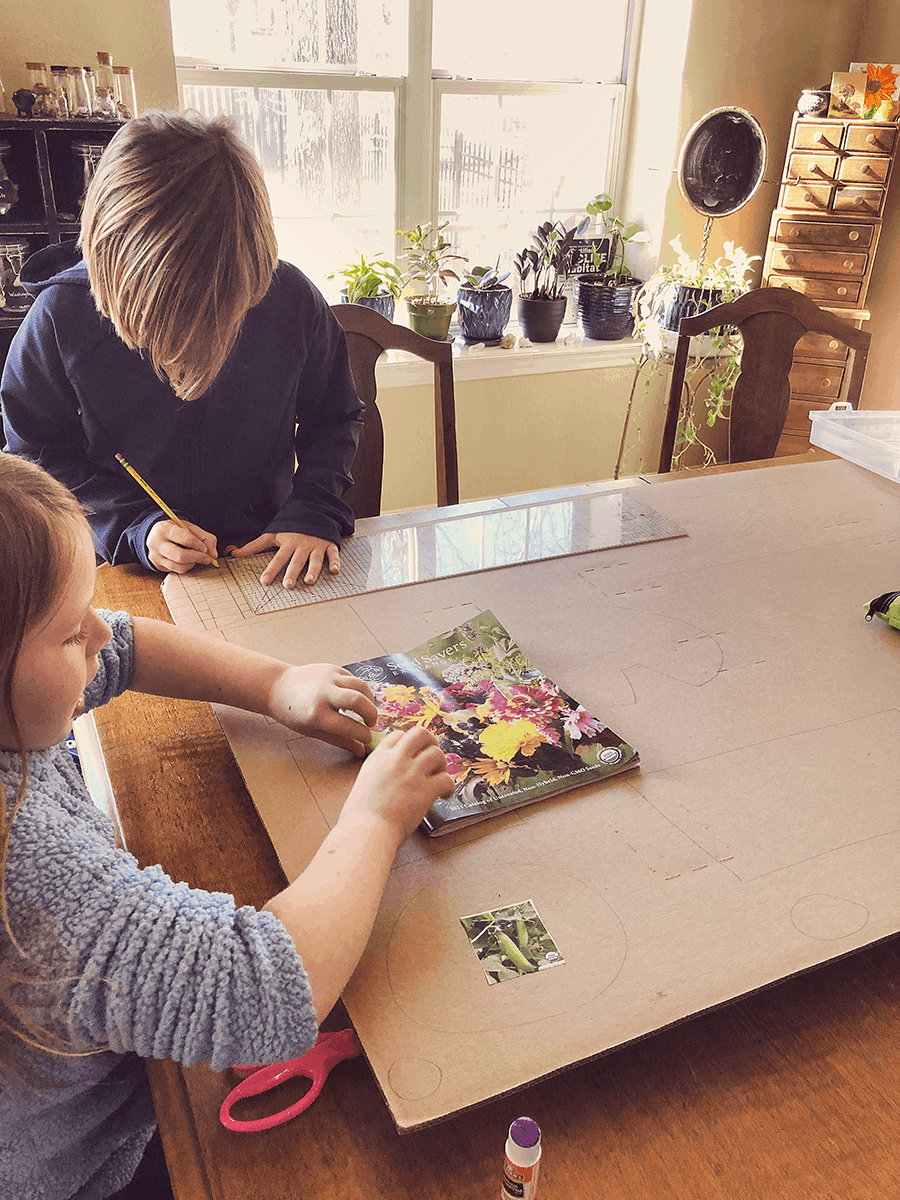
The garden planning process
We take the learn as we go route. My first step in the garden planning process is to draw out the layout of my garden. I make a smaller copy for myself and a larger version for my children. For older children, you could use grid paper and have them make the aerial view to scale. With younger children, draw in the shapes of your garden. Or just give them a big piece of cardboard left over from the holidays and let them have at it.
It’s also fun to let them imagine what their own garden plot would look like, whether it’s an actual garden space or just a pot of their very own. We get out our art supplies and draw what our garden space looks like from above. There are no rules for this, it’s meant to be fun. So set aside lessons and expectations, and have some fun.
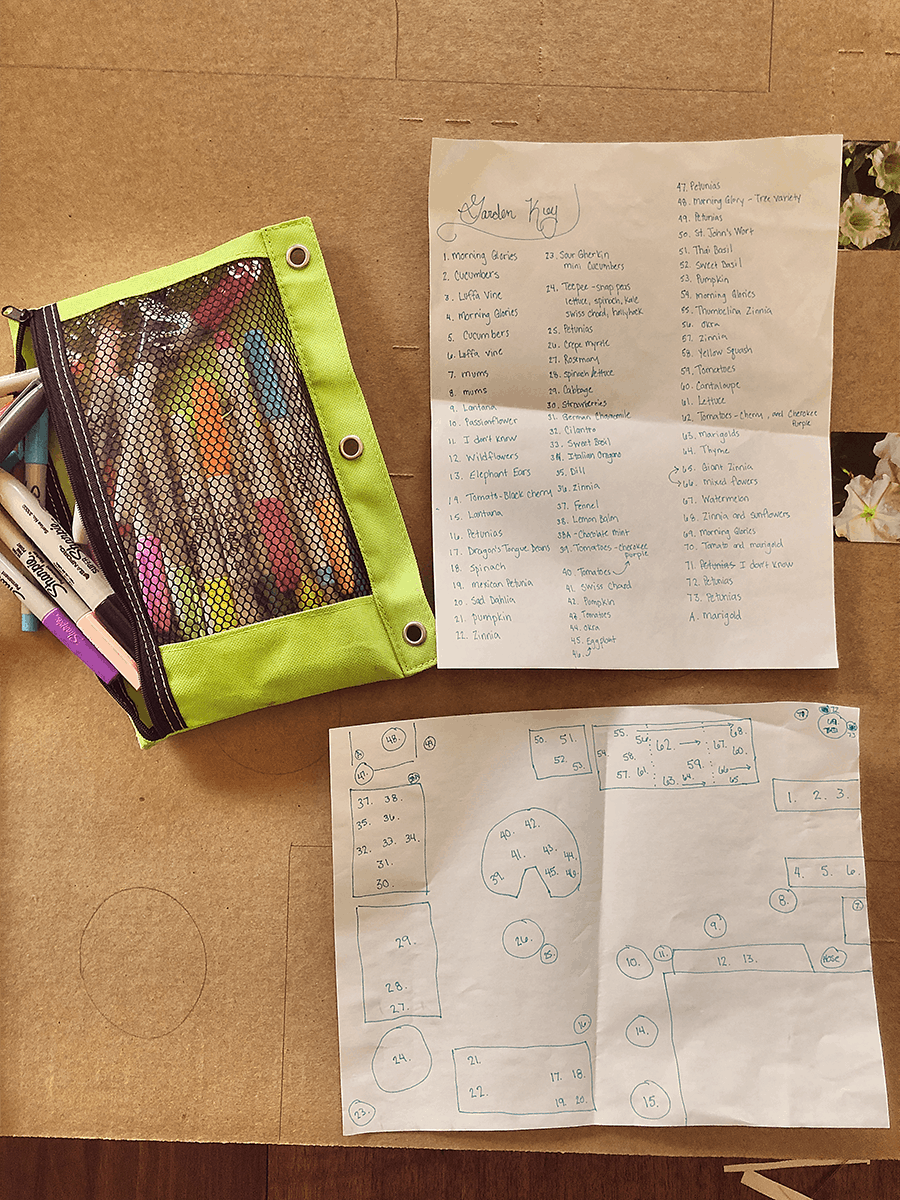
Put your pens and markers to paper
After you have the outline of your garden space complete, it’s time to start filling it in. Older children can label and work on spatial awareness as they designate a place for each plant. It’s also a great way to work on handwriting. Younger children can color or draw what they want in their garden space. I like to go back to the garden map I made the previous year, to see what I had growing where, what was a perennial or annual, and what I want to change.
As you learn to garden, one thing I highly recommend is to be a casual journaler. I’m not talking about obsessive growing notes, but if that’s you, go for it. More like just making notes throughout your year about what is growing well, what isn’t, what pests you’re dealing with, and things you’d like to change. Then you can refer to those notes as you plan for the next year. Mental notes are great (if you can remember them), but I prefer paper. A simple journal works great, but you can also find all kinds of garden journals or diaries for more detailed notetaking.
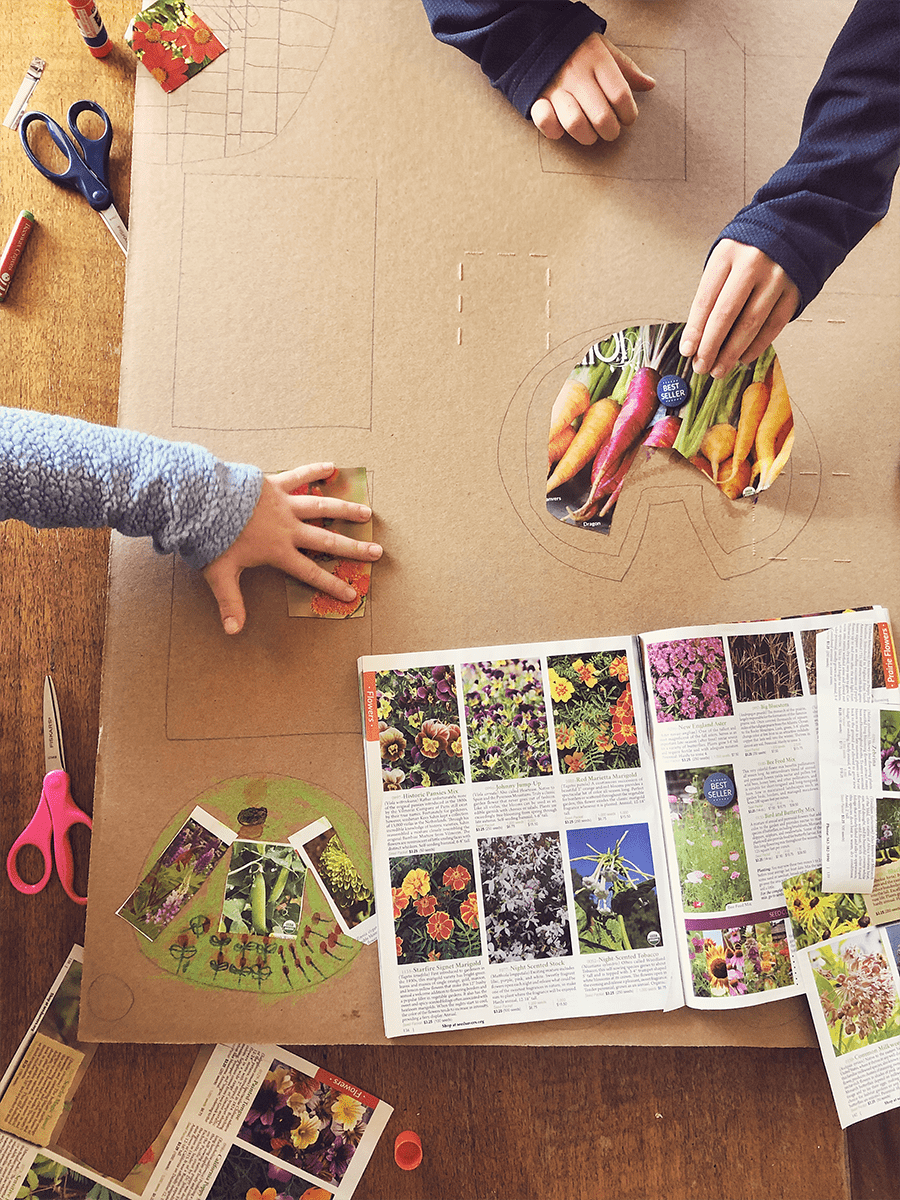
Making garden planning fun for kids
One of the best ways to make the garden planning fun and visual for children is to let them cut up pictures to paste onto the map you made. Remember middle school (ish?) when we cut up photos from magazines and newspapers? Then we glued them onto our trapper keepers to make them super cool? Yeah, we’re doing that again! But this time it’s with seed catalogs.
WITH WHAT?! Yes, with seed catalogs. By the time I’m ready to plan with my kids, I’ve already poured over the countless number of seed catalogs I received (several times). I order all of my seeds online so I don’t need the magazines anymore, but they are so pretty and filled with vivid photos of plants. It’s so fun to make the garden plans highly visual with the pretty pictures.
I give my kids the seed catalogs, scissors, and glue and let them have at it. Fix yourself a coffee or tea, turn on some classical music, and browse your own garden journal. You can even organize your seeds while they have fun. It’s a great way to visually see your garden, all the colors and shapes, the various plants, flowers and vegetables. Plus, it gets the kids excited about the process and they become knowledgeable about the plants in your garden.
To really make garden planning special for kids, designate a garden space just for your children. Make a little garden sign for their space, let them choose a seed packet, and let them be in charge from start to finish.
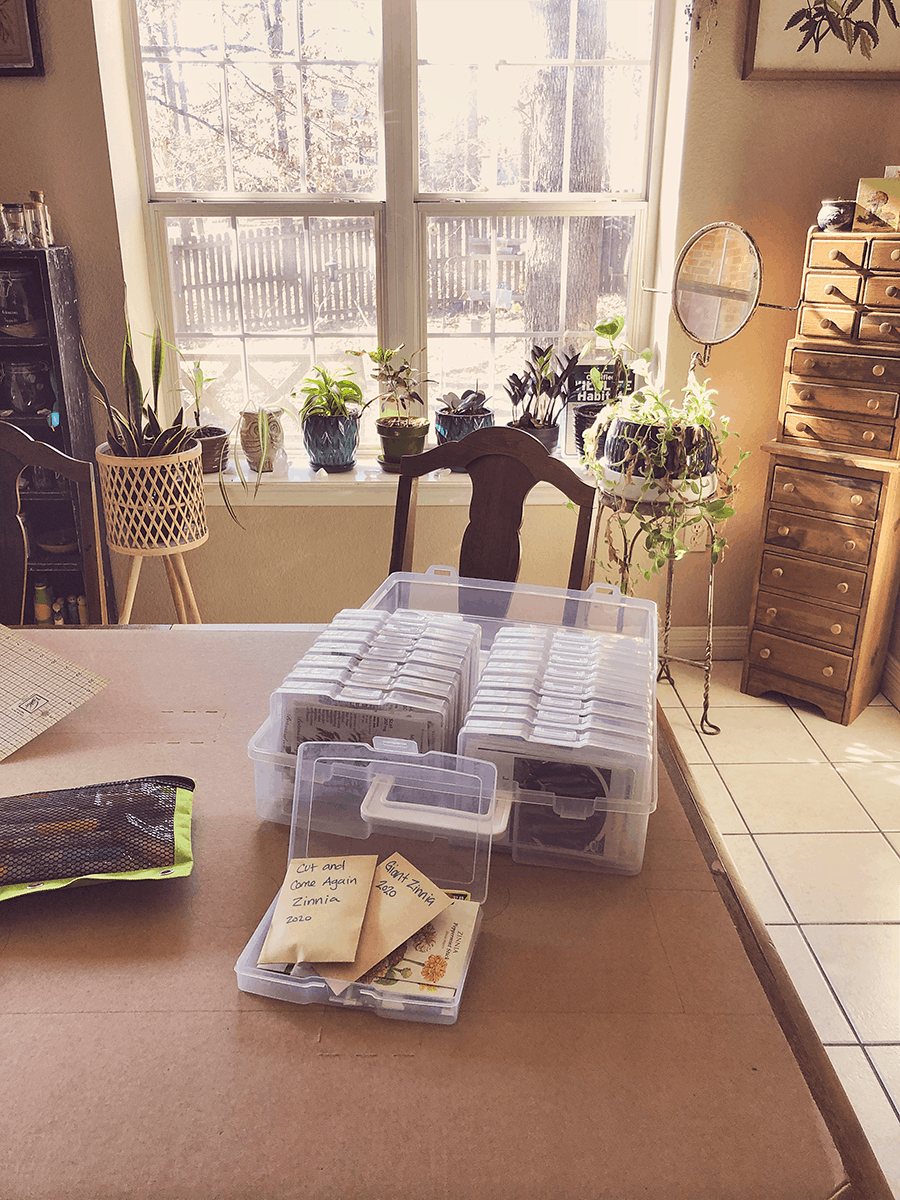 This case is for organizing photos but it works GREAT for seeds. Find it HERE.
This case is for organizing photos but it works GREAT for seeds. Find it HERE.
When and where do you order seeds?
Yesterday. No really, order them right now. ASAP. Due to current world circumstances, seed shops and garden centers are seeing unprecedented amounts of orders. Baker Creek seeds has shut its website down several times to get caught up on orders. Seed Savers has a disclaimer up about the delayed shipping times. Seed companies all over are struggling to keep up with the demand. However, you can get seeds locally at big box garden centers and local garden centers.
If you’re hoping to save your seeds, I would recommend buying non-GMO, organic, or heirloom seeds to begin, to be sure of saving high-quality plants. Another great way to gather seeds is to participate in a seed swap with gardening friends. A page that I adore, Jill Ragan of Whispering Willow Farm does a huge seed swap every year and it’s really neat. Also, a huge shout out to Jill for her genius seed organizing idea. She’s an inspiring gardener and I highly recommend following her.
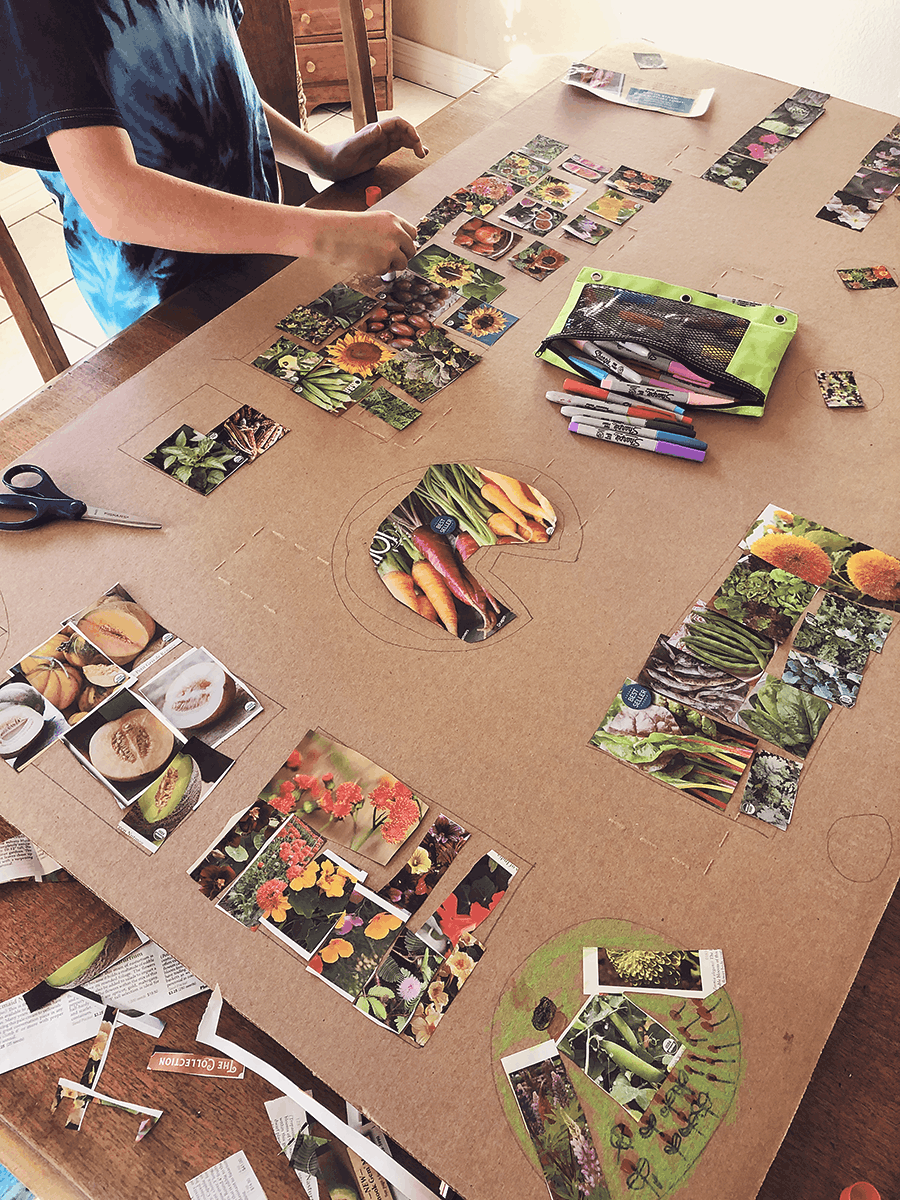
What you’ll need for garden planning with kids
To make the garden planning FUN for you and your children, here is what I recommend:
- Markers, crayons, pencils, paint, any and all art supplies
- Scissors and glue (glue sticks work best)
- Gardening magazines and seed catalogs
- A large piece of paper, or piece of a cardboard
- Graph paper for older children
- Finger paints and finger paint paper for younger children
- A large workspace – clear the kitchen table or do it on a hard surface floor
- A no-rules attitude, let the creativity flow (that includes you too)
- Some background jams (I prefer classical music)
- Snacks
- Coffee or tea for mental stimulation, plus it just tastes good
Remember, this is meant to be a fun activity to involve your children in the planning process, so let it be fun! If they mess up and put sunflowers in the middle of the tomatoes, it doesn’t matter. It’s an opportunity to learn, for everyone.
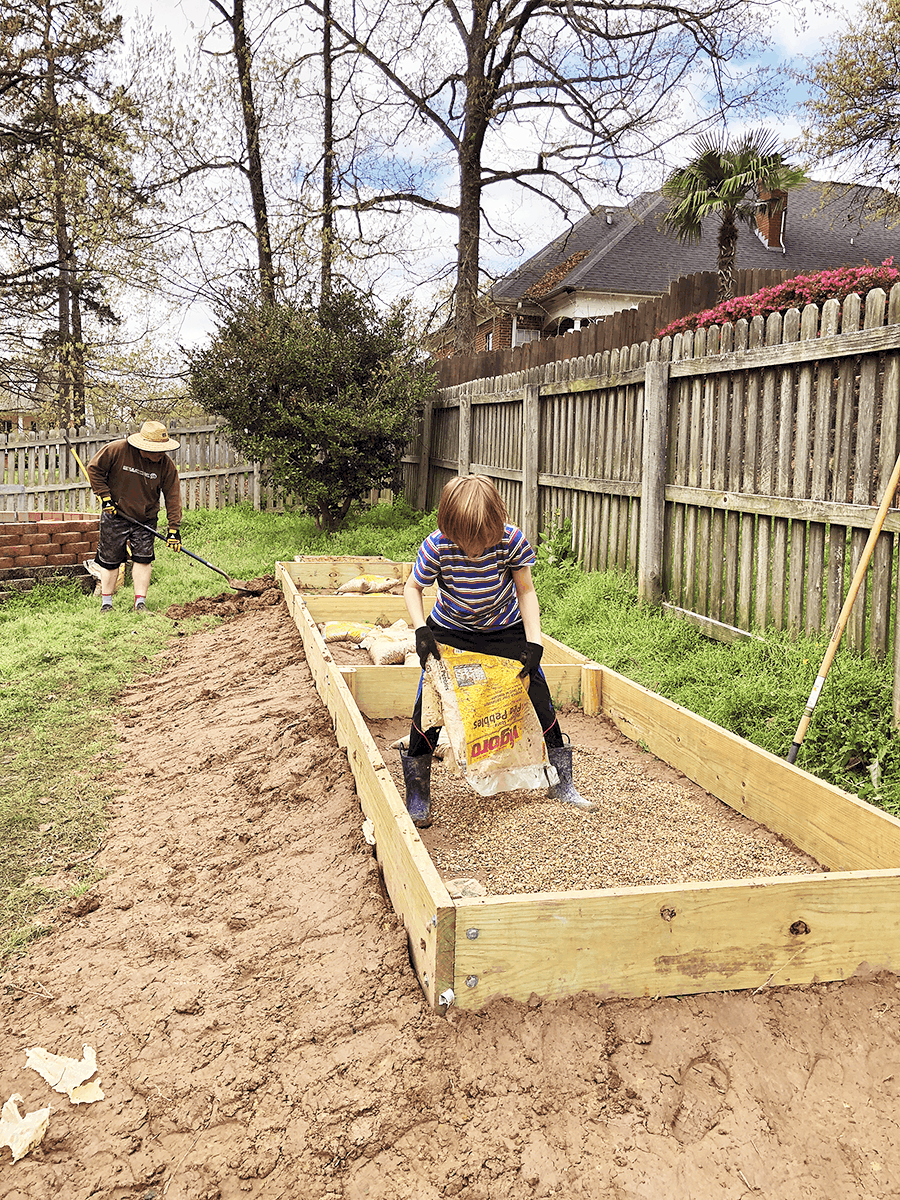
What about older children?
Garden planning is a great opportunity for older children to do some critical thinking. Here are some ways to involve older children that will help them with some STEM skills and concepts:
- Have them generate a graph to show seed starting dates and when to plant in the ground
- Research companion planting
- Create a planting schedule
- Make a budget for seed spending
- Practice taking soil pH samples
- Create wet mount slides to look at the soil under a microscope (Nematodes, yay!)
- Make a business plan for selling transplants (small plants grown from seed)
There are so many ways to make this project fun for the whole family. I highly suggest getting everyone involved. The world has felt so heavy in the last year and having a family hobby that gets everyone involved, excited, and eventually outside is a very, very good thing.
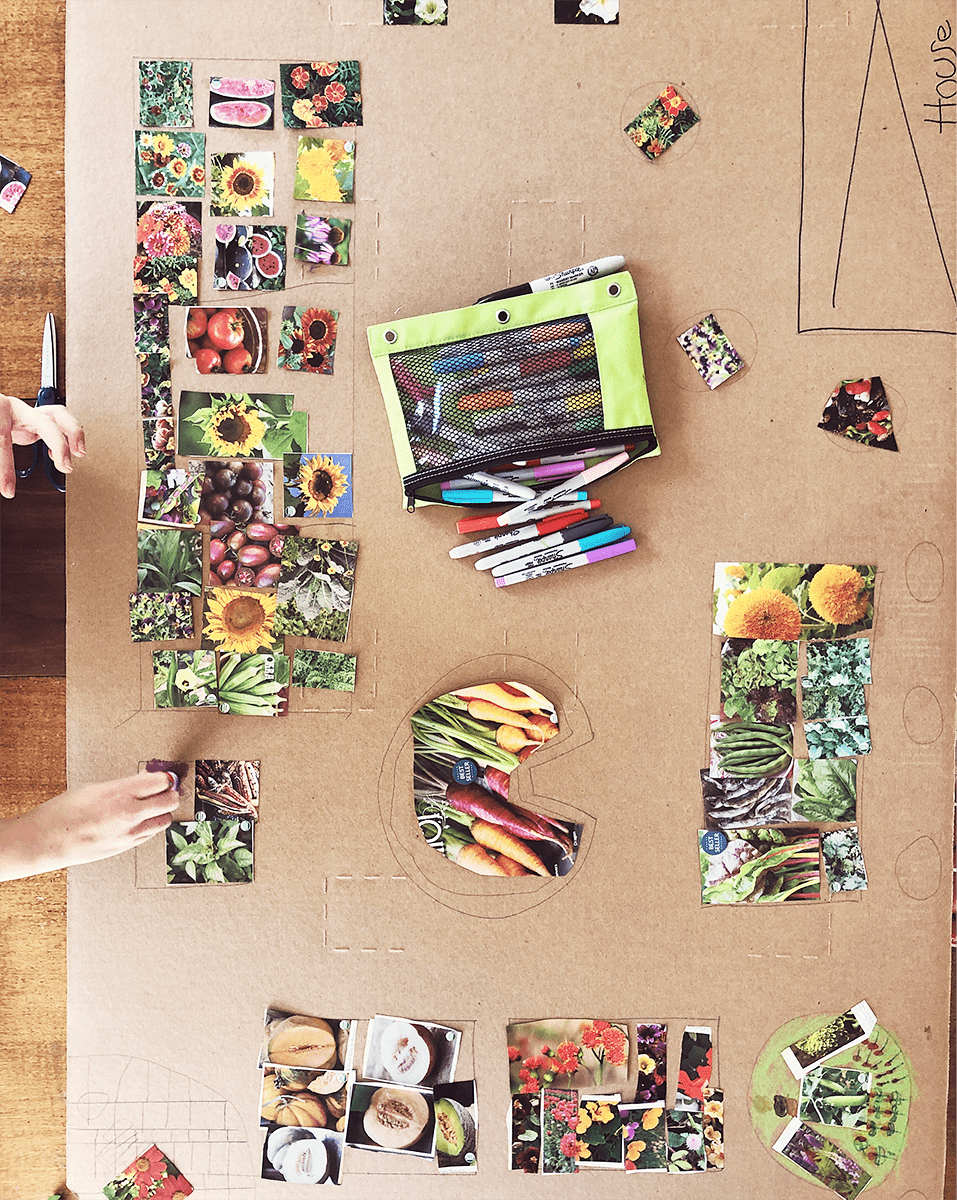
A few favorite gardening resources
I’m an entirely self-taught gardener. Everything I know came from reading, listening to talks and speeches, obsessive internet searching, trial and error, and asking lots of questions. I encourage you to find books, magazines, podcasts, people, mentors, and even gardening accounts on social media. These resources are so important and helpful as you learn what works for you and your family.
Here are a few of my favorite gardening books:
- Edible Landscaping by Rosalind Creasy – Her original book is nearly impossible to find now, however she has many other books available on Amazon.
- The Vegetable Gardener’s Bible by Edward C. Smith
- Raised Bed Gardening for Beginners by Tammy Wylie
- Carrots Love Tomatoes by Louise Riotte
- Junior Master Gardeners Handbook
- Up in the Garden, Down in the Dirt by Kate Messner
- Seeds! Seeds! Seeds! by Nancy Wallace
- We are the Gardeners by Joanna Gaines
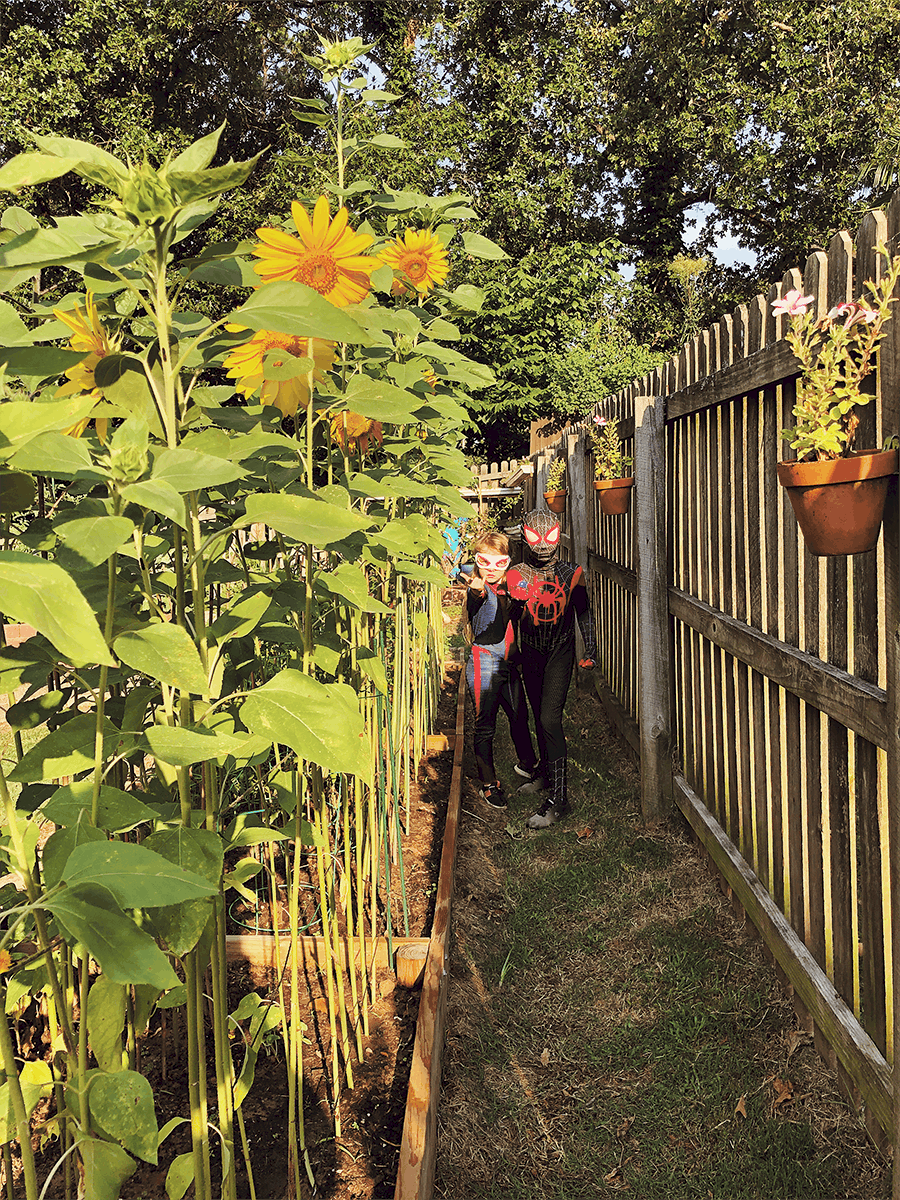 Spiders make a regular appearance in our garden.
Spiders make a regular appearance in our garden.
Want even more gardening goodness?
If you’d like to hear more about our gardening shenanigans and follow along on our growing journey, you’re in luck! You can read about the luffa vines that took over our garden and how my kids made a little business out of it HERE. Do you love sunflowers? Me too! You can read about our end of the season sunflower dissection HERE. I also made garden Reels videos my “thing” last summer on Instagram. Here’s a fun one, and another fun one. Follow along as our garden grows on #coleyraegardens. I’m here to help answer any questions I can or point you in the right direction. And please tag me (@coleyraeh) on social media if you make garden plans. I’d love to see them!
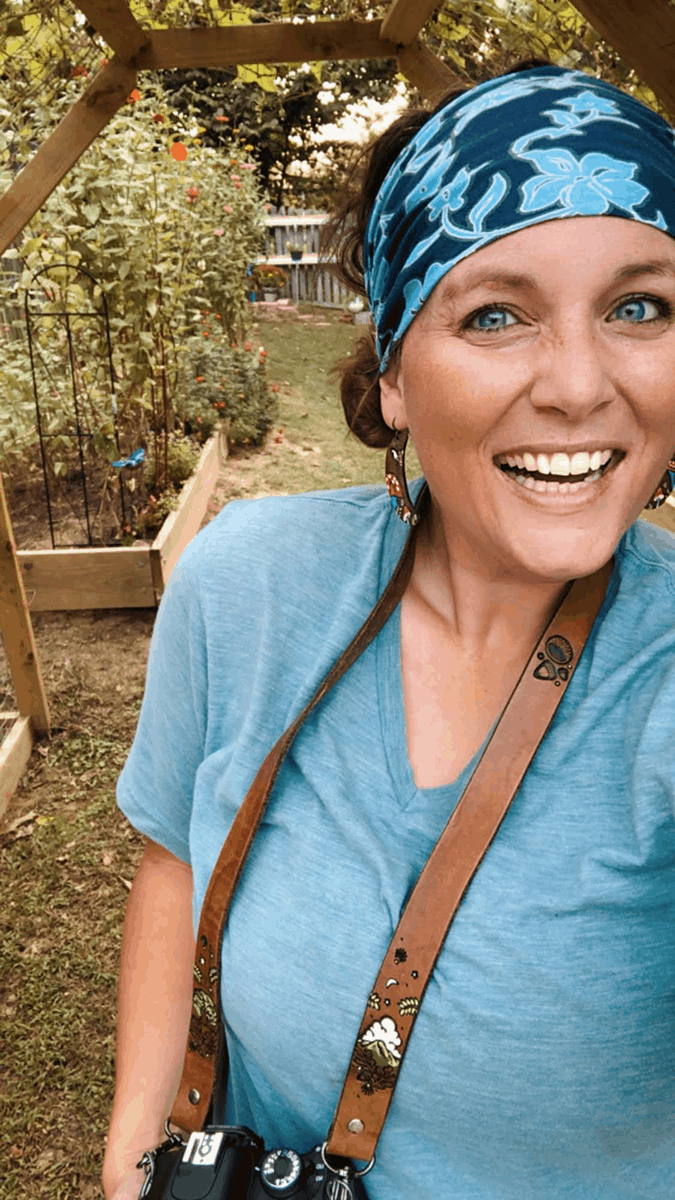
Are you excited about planning your garden this year?
Will you make some plans ahead of time or make it up as you go?

About the author
Nichole is mama to two incredible adventurers, an older boy and a younger girl. They are in their seventh year of homeschooling. She’s married to her best friend and they share a mutual love for the outdoors. An Iowan native now living in the south, she is happy to claim Arkansas as home. She is a wanderlust (and coffee) fueled, fearless, road tripper who has been known to take off for epic adventures at a moment’s notice. Hiking and camping (of the backpacking variety) and crystal digging are a few of their favorite family activities. You can find her in the woods somewhere, probably up a creek, and jumping off waterfalls.
You can find more from Nichole online in the following locations:
Website: www.luckeywanderers.com
Instagram: @coleyraeh
RWMC posts: Nichole
Comments
2 responses to “Winter Garden Planning with Kids”
I really like your article it’s a great efforts thanks for sharing
[…] Read our full post on winter garden planning with kids. […]

Leave a Reply